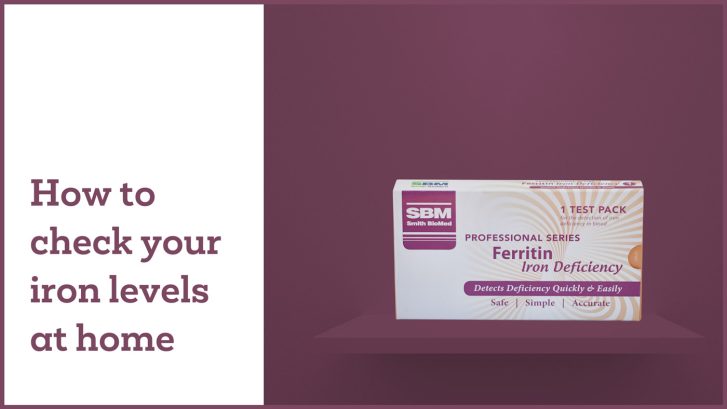The Smith Biomed Ferritin Iron Deficiency Test is a home iron test that measures the amount of ferritin in your blood. This handy test tests for iron deficiency anaemia and by testing ferritin levels it will give you an indication of the amount of iron stored in your body. You can purchase the Ferritin Rapid Test at your local Pharmacy onsite or online, also available at Chemist Warehouse.
Here is some handy information for you on what you’ll be testing, what is included with the test and how it checks your irons levels through ferritin testing.
Why am I testing for ferritin?
Ferritin is a protein that stores iron and releases it in a controlled manner. Testing ferritin levels is a useful way to assess the body’s iron stores, as ferritin reflects the amount of iron stored in the tissues.
Interpretation of ferritin levels requires consideration of various factors, including age, gender, and individual health conditions. This test enables you to use reference ranges to interpret ferritin levels and determine whether they fall within a normal range or if further investigation and intervention are needed.
If your test returns results you’re concerned with consulting with a healthcare provider to properly interpret ferritin test results and develop an appropriate plan of action based on your overall health and medical history.
How does this test check my blood’s iron levels?
Iron Storage Marker: Ferritin is the primary intracellular protein for iron storage. When the body has sufficient iron, excess iron is stored in the form of ferritin within cells, particularly in the liver, spleen, and bone marrow.
Blood Ferritin Levels: Ferritin is released into the bloodstream in small amounts, and the concentration of ferritin in the blood is proportional to the amount of iron stored in the body.
Indicator of Iron Status: By measuring ferritin levels in the blood, testing can assess the body’s iron stores. Low ferritin levels may indicate iron deficiency, suggesting that the body’s iron stores are depleted. Conversely, high ferritin levels or iron overload may suggest an excess of iron in the body.
Correlation with Anaemia: Ferritin levels are often used in conjunction with other blood tests, such as haemoglobin and serum iron, to diagnose different types of anaemia. For example, low ferritin levels along with low haemoglobin and serum iron may indicate iron-deficiency anaemia.
Inflammatory Marker: It’s important to note that ferritin is also an acute-phase reactant, meaning its levels can increase in response to inflammation or infection. In such cases, elevated ferritin levels may not necessarily reflect an increase in iron stores but could be a response to other health conditions.
What is the test?
The Ferritin Rapid Test measures the levels of ferritin in your blood. Testing ferritin levels indicates the amount of iron stored in your body.
What does it test for?
A ferritin blood test tests for iron deficiency anaemia which can occur in children and women of all ages. At least 20% of women who still have their periods, can experience symptoms of iron deficiency. Key symptoms and side effects of iron deficiency are paleness, feeling tired, headaches, experiencing a faster heartbeat, shortness of breath during exercise and other medical conditions. These symptoms may appear gradually and could go unnoticed.
Iron deficiency occurs when blood does not contain enough red blood cells with low levels of haemoglobin, which is the major protein involved in oxygen transport in the body. This can lead to iron deficiency and other health conditions.
An important component of haemoglobin is iron. Low levels of iron can happen while you are growing, if you have inadequate absorption in your body, are pregnant or are having blood loss due to periods, abnormal bleedings, or ulcers. This can have a major impact on your health.
Low ferritin may also indicate hypothyroidism, vitamin C deficiency or celiac disease. Low ferritin levels are seen in some patients with restless legs syndrome.
What does the test include?
Materials provided in the boxed test include the following, alongside easy to follow instructions:
- Test Cassette
- Capillary Dropper
- Buffer Bottle & Solution
- Alcohol Pad
- Lancet
- Instruction Leaflet
How to use your test when it arrives

1. Wash your hands with soap and rinse with clear warm water. Open the foil pouch and get out the Cassette-place on a flat surface.

2. Use the provided alcohol pad to clean the fingertip of the middle or ring finger as the puncture site.

3. Carefully twist and pull off and dispose of the round cap of the lancet.

4. Press the lancet, against your fingertip on the side from where the cap was extracted. This will allow the lancet to pierce the skin. The tip of the lancet retracts automatically and safely after use.

5. Keeping your hand down massage the end of the finger to obtain a blood drop.

6. Place the capillary dropper in contact with the blood without squeezing the bulb. Let the blood flow into the dropper until it reaches the indicated line. Massage your finger if more blood is needed to reach the line.

7. Put the blood collected into the sample well marked ‘S’ of the cassette, by squeezing the dropper bulb.
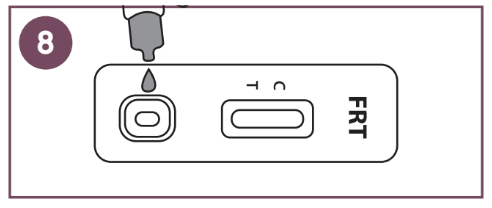
8. Wait for all the blood to be in the well then unscrew the cap of the buffer bottle and add 1 drop of buffer into the same sample well of the cassette.
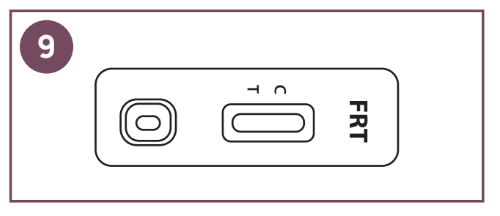
9. Wait for the coloured line(s) to appear. Read results at 5 minutes. Do not interpret the result after 10 minutes.
How to interpret the results of your test

Normal: Two coloured lines appear. Both the T (Test) and C (Control) lines appear. Even if there is a very faint line at T (test), then the test will indicate a normal level of Ferritin. This result means that the Ferritin concentration in your blood is normal and that there is no potential iron deficiency.
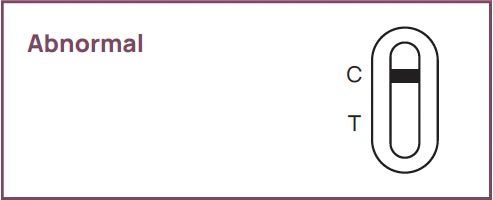
Abnormal: One coloured line appears under the control line (C) only. This result means that the ferritin concentration in your blood is too low. You should consult your doctor because you may have an iron deficiency.
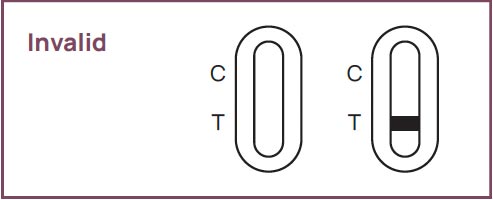
Invalid: Control line fails to appear. Insufficient specimen volume or incorrect procedural techniques are the most likely reasons for control line failure. Review the procedure and repeat the test with a new test. If the problem persists, discontinue using the test kit and contact your local pharmacy or healthcare provider for a test done by them.

